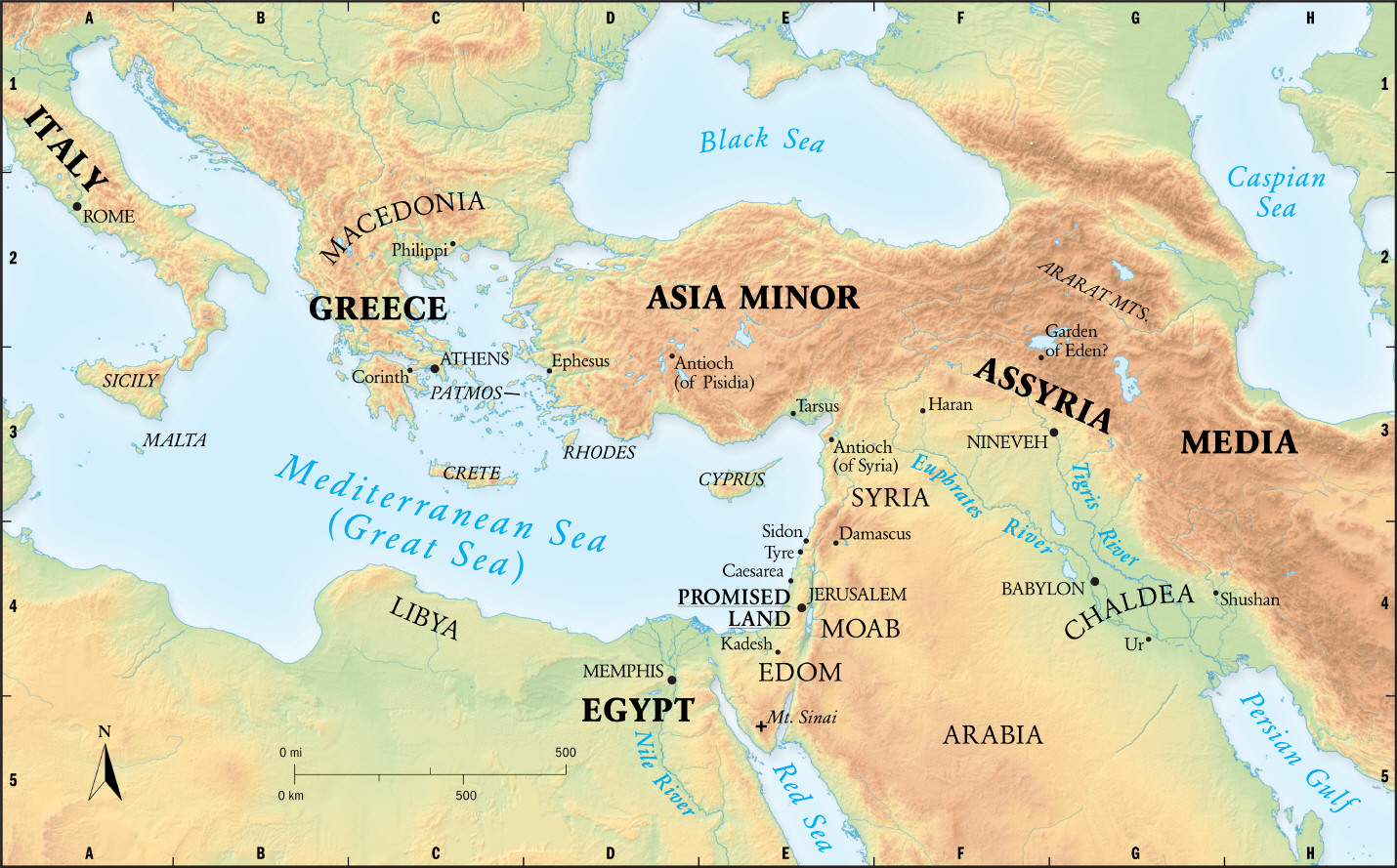The content displayed below is for educational and archival purposes only.
Unless stated otherwise, content is © Watch Tower Bible and Tract Society of Pennsylvania
You may be able to find the original on wol.jw.org
The Lands of the Bible
AS ISRAEL prepared to enter the Promised Land, Moses expressed to God his deep desire: “Let me pass over, please, and see the good land that is across the Jordan, this good mountainous region.”—De 3:25.
For Moses, that was not to be, but he did ascend a mountain facing Jericho and see the land—‘Gilead as far as Dan and the land of Judah as far as the western sea and the Negeb and the Jordan valley.’ (De 3:27; 34:1-4) Have you heard those names? Do you know their locations?
Few of Jehovah’s people today can visit the many places they read about in the Bible. They are not able to do what God said he would have Abraham do, travel the length and breadth of the Promised Land. (Ge 13:14-17) Still, true Christians are keen to know about Bible locations and to see how they relate, one to the other.
“See the Good Land” is a tool that you can use to expand your understanding of the Scriptures. It contains photographs of actual locations, such as Gilead, shown on the cover. Even more informative are the maps, which can greatly deepen your knowledge of Bible sites.
The map on pages 2 and 3 focuses on major lands or regions. For instance, when you note where Assyria and Egypt were relative to the Promised Land, you can better understand prophecies that mention those lands. (Isa 7:18; 27:13; Ho 11:11; Mic 7:12) The small strip called the Promised Land was an ancient crossroads, and other nations sought to dominate its rich grain fields, vineyards, and olive groves.—De 8:8; Jg 15:5.

Sometimes you will want to compare maps. For instance, Jonah was assigned to the capital of Assyria, but he sailed off for Tarshish. (Jon 1:1-3) Do you find those areas on that first map? But Tarshish is not to be mistaken for Tarsus, where the apostle Paul was born. You will find Tarsus and other notable cities on the map here.
Think of the length and route of Abraham’s trip as you pick out Ur, Haran, and Jerusalem. After Jehovah called him from Ur, he resided in Haran and then moved to the Promised Land. (Ge 11:28–12:1; Ac 7:2-5) Abraham’s trip will come more alive as you study “The World of the Patriarchs,” on pages 6-7.
The first map and the one here are not time specific. After those two, the maps are basically in historical order. Cities or details on a map relate to events of a certain period. While the Index (pages 34-5) does not include every site named on the maps, it can usually help you to find which maps relate to the point you are currently researching.
The map in the center spread (pages 18-19) has the largest collection of towns and cities in the Promised Land. The Map Legend will help you to find the Levite cities and the six cities of refuge as well as to know whether a place was mentioned in the Hebrew Scriptures, the Greek Scriptures, or both.
The locations of some Biblical sites are presently unknown, so most of those names are not on that center map. Also, it was not possible to fit on it every city and town, such as all in the lists of tribal boundaries. (Jos, chaps. 15-19) Yet, that map usually includes nearby cities, thus enabling you to approximate the location. Some geographic features (mountains, rivers, and torrent valleys) are marked, and elevation and terrain are indicated by colors. Such details can help you to visualize aspects of Bible events.
More information about Bible locations is available in the encyclopedia Insight on the Scriptures, which is available in many languages.a As you use that and other Bible study aids, keep “See the Good Land” at hand. Consult it as you study all the Scriptures, which are so beneficial in your life.—2Ti 3:16, 17.
[Footnote]
Published by Jehovah’s Witnesses.
[Box on page 5]
BIBLE BOOKS WERE WRITTEN IN
Babylon
Caesarea
Corinth
Egypt
Ephesus
Jerusalem
Macedonia
Moab
Patmos
Promised Land
Rome
Shushan
[Map on page 4, 5]
(For fully formatted text, see publication)
Bible Lands and Key Cities
A1 ITALY
A2 ROME
A3 SICILY
A3 MALTA
C2 MACEDONIA
C2 Philippi
C2 GREECE
C3 ATHENS
C3 Corinth
C3 CRETE
C4 LIBYA
D3 Antioch (of Pisidia)
D3 Ephesus
D3 PATMOS
D3 RHODES
D4 MEMPHIS
D5 EGYPT
E2 ASIA MINOR
E3 Tarsus
E3 Antioch (of Syria)
E3 CYPRUS
E4 Sidon
E4 Damascus
E4 Tyre
E4 Caesarea
E4 PROMISED LAND
E4 JERUSALEM
E4 MOAB
E4 Kadesh
E4 EDOM
F3 Garden of Eden?
F3 ASSYRIA
F3 Haran
F3 SYRIA
F5 ARABIA
G3 NINEVEH
G4 BABYLON
G4 CHALDEA
G4 Shushan
G4 Ur
H3 MEDIA
[Mountains]
E5 Mt. Sinai
G2 ARARAT MTS.
[Bodies of water]
C3 Mediterranean Sea (Great Sea)
E1 Black Sea
E5 Red Sea
H2 Caspian Sea
H5 Persian Gulf
[Rivers]
D5 Nile River
F3 Euphrates River
G3 Tigris River